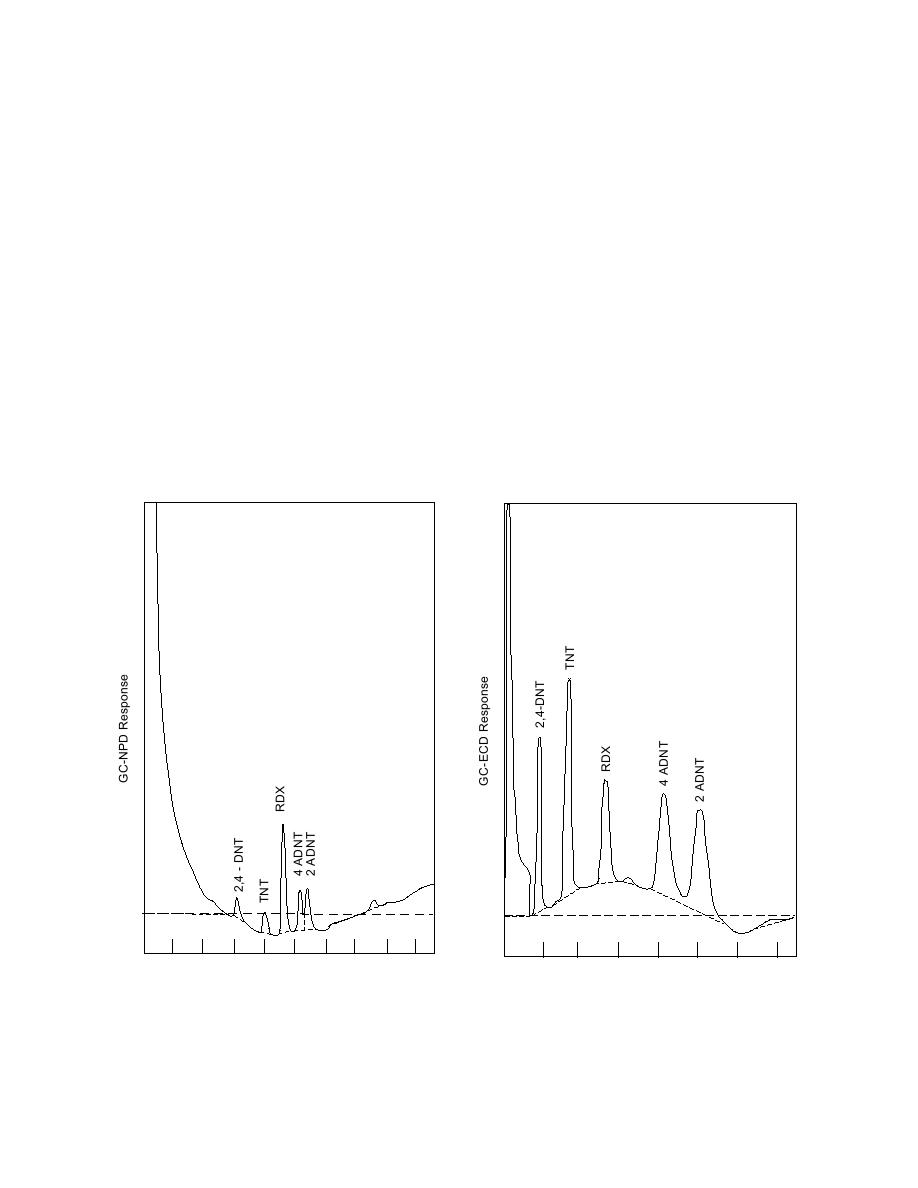
In the study by Walsh and Ranney (1998), they
1 and 2, respectively. Analysis of samples with high
injected solvent extracts into the heated injection
concentration of HMX confirmed that the latest
port of a Hewlett-Packard 5890 GC equipped with
eluting peak(s) (retention time > 7.5 min) was in-
an ECD and a 6-m, 0.53-mm-i.d. polydimethyl-
dicative of this compound (Fig. 1). However, ei-
siloxane column. They established that responses
ther the low vapor pressure of HMX caused it to
for analytes with low vapor pressures were en-
rapidly condense once leaving the column, or it
hanced by increasing the linear velocity of the car-
was thermally degraded, and consequently these
rier gas and the injection port temperature. Fol-
late eluting peaks could only be used to qualita-
lowing their lead, we chose on-column injections
tively identify its presence. The GC manufacturer
into a heated injector and a carrier gas flow rate of
suggested that upgrading the NP detector to one
9.5 mL/min that produced a linear velocity of 70
with a heater would eliminate this quantitation
cm/sec. The two detectors used different chro-
problem. We have not yet verified this possibility.
matographic conditions because, while tempera-
HMX was not detected by the ECD. Here a long
ture programming was feasible with the NPD,
metal transfer line exists between the column
excessive baseline drift limited the ECD to isother-
and detector, and HMX compound is known to
mal operation during the elution of the target
be very reactive with hot metal surfaces (Walsh
analytes.
and Ranney 1998). More work is underway to find
Typical chromatograms of the target analytes
a way to include HMX determination in this
for the NP and EC detectors, are shown in Figures
method.
1
2
3
4
5
6
7
8
9
1
2
3
4
5
6
7
Time (min)
Time (min)
Figure 1. Chromatogram of 2,4-DNT, TNT, RDX,
Figure 2. Chromatogram of 2,4-DNT, TNT, RDX,
4ADNT, 2ADNT, and HMX by GC-NPD analysis.
4ADNT, and 2ADNT by GC-ECD analysis. Analyte
Chromatogram is of one of the MDL samples (approxi-
concentrations approximately 0.5 mg/kg.
mately 0.5 mg/kg).
6




 Previous Page
Previous Page
